10 Grocery Items Facing a Lower Supply Right Now
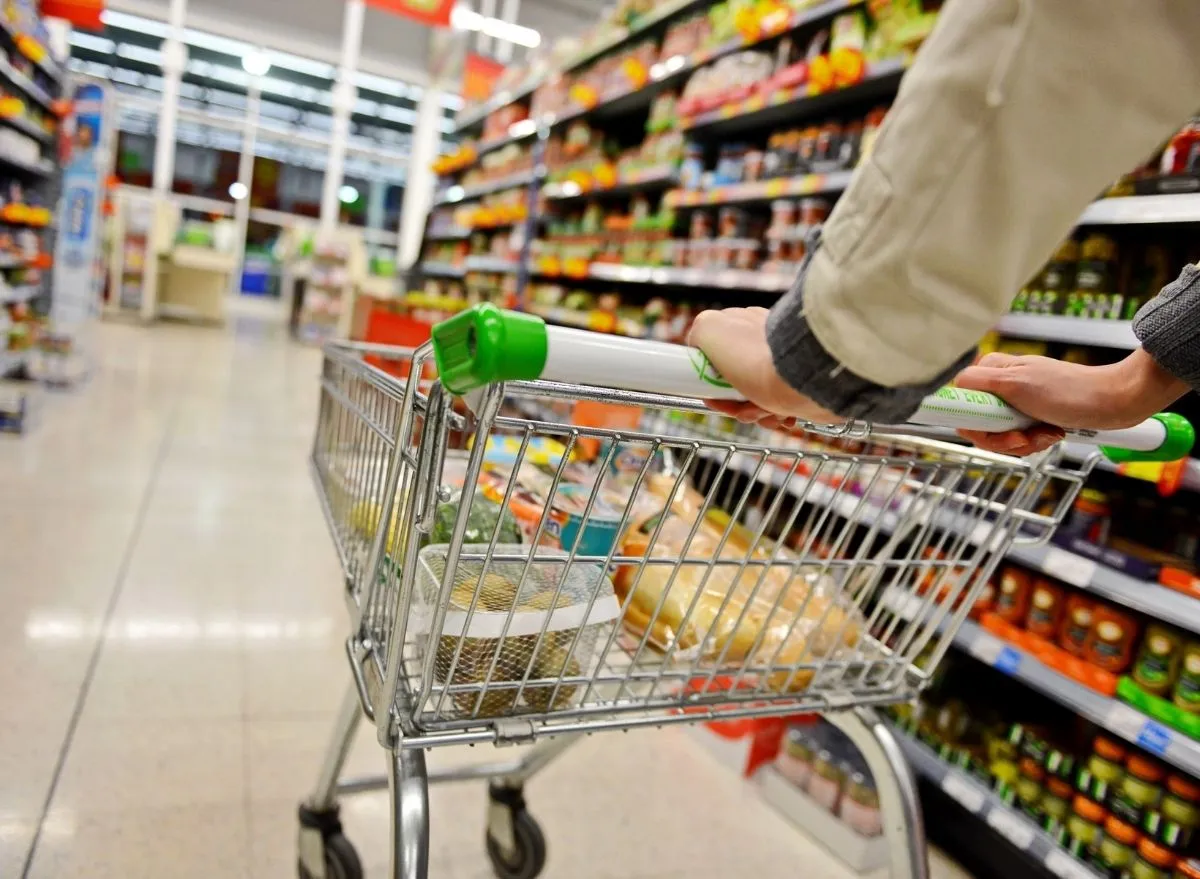
Winter is the season that makes you feel like hibernating and stocking up on food to avoid the outside world. But it might be tougher than usual to find everything you want. While we’ve mostly acclimated to the lingering effects of the COVID crisis, challenges in the grocery industry have been difficult to accept. And it looks like the supermarket supply chain is still reeling—from the aftermath of the pandemic, climate change effects, and global conflict.
It’s not as easy as it used to be to walk into a store and find all your favorite products. Spotty shelves are becoming all too familiar, and higher receipt totals are the new normal. When it comes to selection, you may have found your shopping preferences have shifted away from name brands and toward private-label items that give your wallet some breathing room.
With all the shortages in 2022, you may not be surprised that these 10 items have made the list. But it’s important to not panic-buy. The reality of the situation is that you won’t have to stockpile groceries to get your hands on these products. During times where demand outpaces inventory, you’ll see higher prices and fewer options while the supply chain catches up, but you’re not likely to find your shelves empty.
Rice
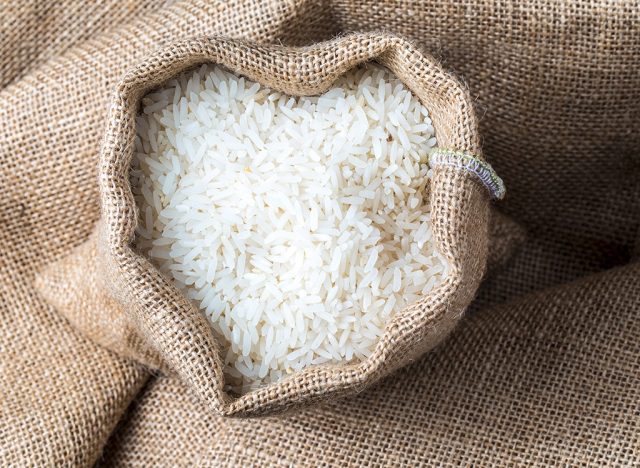
Rice has always been a filling, cost-effective staple to keep on hand. But that may not be the case for long. California rice growers weren’t able to plant half of the usual rice supply due to last year’s megadrought in the West.
As one of the biggest sources of rice in the country, California produces more than 70% of the medium-grain rice supply, according to the USDA. And while rice won’t disappear, it’s possible that this dearth will eventually lead to temporarily elevated prices at the supermarket.
Orange Juice
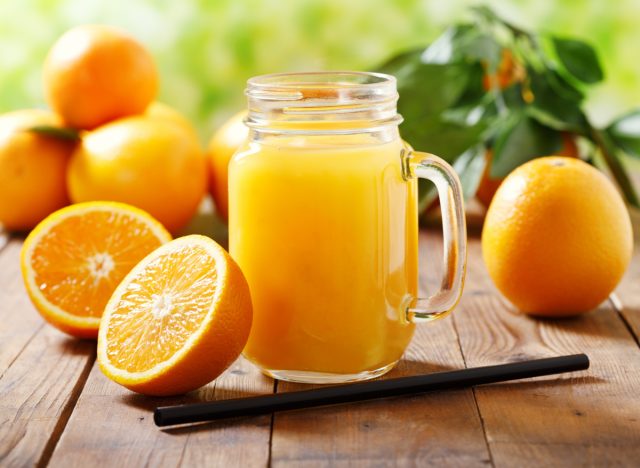
Florida is known for its orange groves, but Hurricane Ian, the second-worst hurricane this century, tore through them this past summer. Not only did the fruit get knocked to the ground, rendering it unusable, but the trees’ rooting systems were also compromised in the storm, Florida grower John Matz told USA Today.
Back in October, the USDA predicted trouble for Florida oranges. Between all the citrus trees infected by greening disease and the hurricane damages, it seems like they were right. However, this will only affect the orange juice at the grocery stores, and not the fruit itself, according to Ray Royce from Highlands County Citrus Growers. “Replacement juice will be brought in from Brazil and Mexico,” he said. “All the juice you drink now is a blended product of domestic and offshore juice.”
Wheat
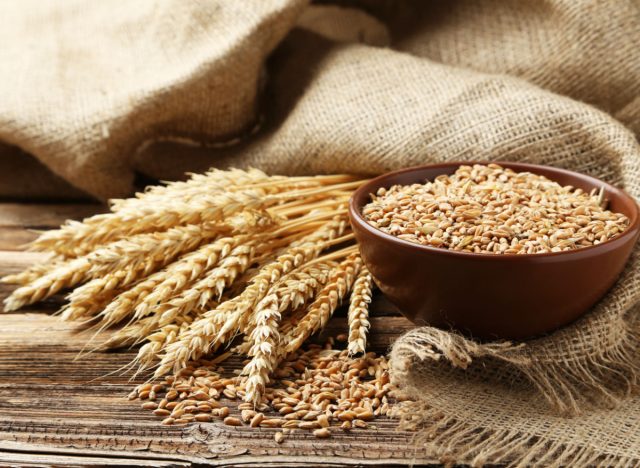
Wondering why your normal selection of breads, pizzas, and pastas have been whittled down? We’re still low on wheat globally, as the war in Ukraine, one of the largest exporters of the grain, continues. Further tightening supplies, India declared a ban on wheat exports in May 2022 to bolster its own food security.
For those who can still find their favorite wheat-based products on shelves, you’re probably going to pay a higher price. The low availability of wheat drives up prices, and the U.S. Bureau of Labor Statistics reported that flour prices are up almost 36% since last year.
Beef
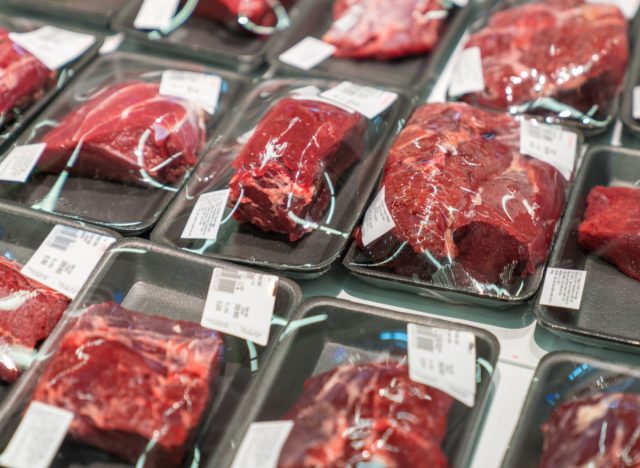
This isn’t the first time beef has made the list. Kinks within the meat supply chain became noticeable in 2021, when extreme drought and dry weather shocked the harvest of wheat, corn, and other grains used for livestock feed.
Lack of feed for the cattle means that farmers have to make the tough decision to slaughter their herds early, reported Business Insider. That became a reality for Texas farmers after widespread drought.
“There isn’t enough grass to eat, and it’s become too expensive to buy feed. We’ve had a large amount of culling this year because of drought,” livestock specialist David Anderson told the news outlet.
Early slaughter will result in an influx of beef supply initially—along with temporarily lower prices—but it has undesirable implications for the coming years. With smaller herds, there will be fewer calves. “There’s going to be a shortage of beef, and prices are probably going to go up,” said Erica Kistner-Thomas, a National Program Leader of the USDA. “This could also have a compounding effect on other meat prices as people switch from beef to chicken.”
Lettuce
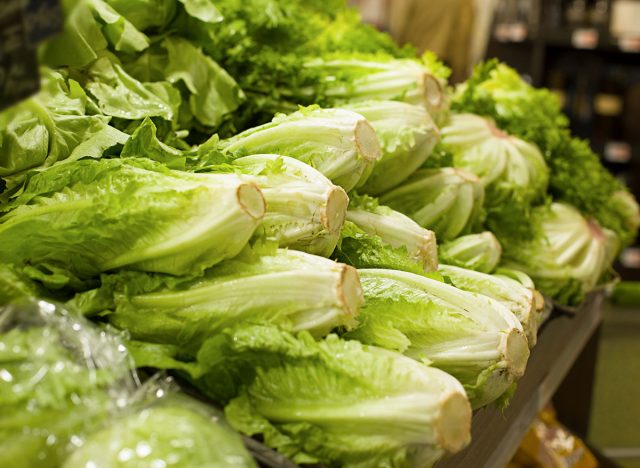
Don’t be too surprised if you’re missing greens on your burger. Iceberg and romaine have been tough to grow, with lettuce production down due to rampant crop disease. Some 70% of the nation’s lettuce supply is cultivated in Salinas Valley, Calif., “the Salad Bowl of the World,” which was hit by a heatwave this past summer. The COO of Dole reported that 40% of iceberg crops didn’t make it, according to Food Dive.
Restaurants are scrambling to make adjustments. Business Insider reported that fast-food chains like Taco Bell, Chick-fil-A, and Panera have informed customers that menu items will be modified to accommodate the short supply. “Due to global supply chain challenges, we may be temporarily out of lettuce,” reads one pop-up message on Chick-fil-A online orders page.
Prices have shot up for lettuce since 2019, when a box of iceberg used to cost $14. In October 2022, the same amount cost $67– more than four times the price.
Luckily, this shortage seems like it’ll be short-lived, according to Dole, which expects to have steady supply by January. By that point, harvest will start in lettuce-growing regions that are less affected by disease, like Arizona. In the meantime, there are plenty of salads you can make without the romaine.
Butter
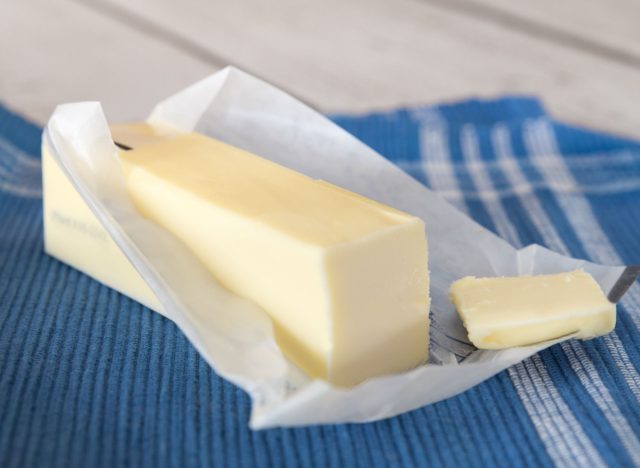
While it’s true that a TikTok trend may have heightened demand for this creamy spread, a butter shortage isn’s new. Production issues have ranged from labor shortages to supply chain snags in the dairy industry over the course of the pandemic. And prices have risen accordingly, with butter hitting $4.77 per unit in August.
Despite the 26% increase in price compared to last year, according to Time, there’s nothing to be too concerned about—as long as people aren’t stockpiling supplies.
“Whatever [the] shortage situation is going to be, we’re pretty much at the peak of it now,” said Peter Vitaliano, chief economist for the National Milk Producers Federation, to Time. “It’s going to be easing as we go through the end of this year and into the new year.”
Eggs
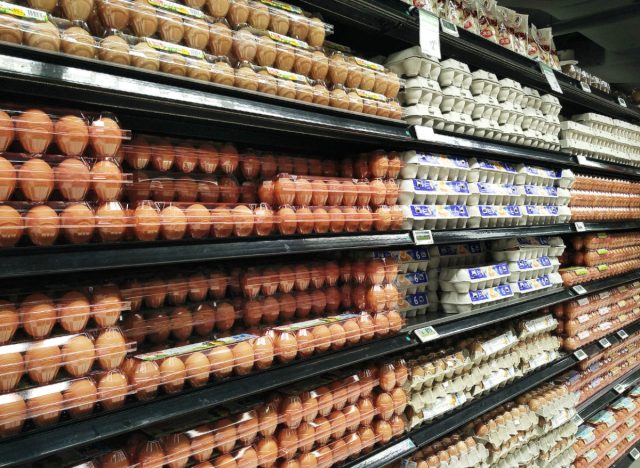
Once considered an affordable protein, eggs keep skyrocketing in price. In 2019, a dozen eggs went for around $1.38 on average. Now, they’re nearly three times the price, with the USDA reporting the average price at $3.50 per carton. Consumers and businesses alike are finding themselves forking over money to keep getting their fix of the staple, but it’s a burdensome increase.
The spread of avian flu is seemingly to blame for the latest shortage and subsequent price hike, taking out 37 million egg-laying hens, 10% of the nation’s supply, since early 2022, according to CNBC.
But the Financial Times reported that this is only one of the many causes for the drop in egg yield for those in the United Kingdom. “The industry has been struggling with rocketing energy and feed costs for months, and rising input costs including labour and packaging.”
As for how long we can expect to see a scarcity of eggs at the supermarket, it’s bound to pose a challenge to your holiday baking. Bill Lapp, president of food economics consulting group Advanced Economic Solutions, told CNBC it may take until the first quarter of 2023 to see any relief.
Tomatoes
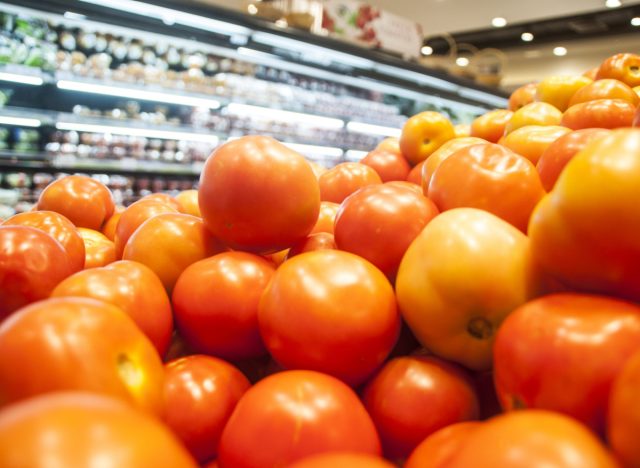
The past year, California’s mega-drought had dire effects on many products in the food supply chain. Tomato plants were stricken by extreme dry weather and unable to get enough rainwater, forcing 37% of farmers to let their crops die off, reported CNET in August. As the West Coast comprises 90% of the nation’s tomato production, many are expecting shortages and raised prices.
But this isn’t as much of a new phenomenon as one might think. Tomato growing has been mired with obstacles for years. “We haven’t had a good crop since 2018, so we’ve been short in 2019, 2020, 2021, and we’re going to be short again in 2022,” said California Tomato Growers Association President Mike Montna to FOX Business.
One farmer shared the impact of inflation on his business. “Fertilizer prices have doubled, historic highs of our fuel prices, in California our labor is [a] significant cost and going up, so we’ve had any margin basically eaten up by these inflation pressures this season.” FOX Business reported that farmers’ cost of production has gone up by 20%. Plan to see the increase reflected in tomato-based products like pizza, tomato sauce, and salsa.
Carbonated Drinks

This shortage has been bubbling up since the summer, and it hasn’t fully been resolved yet. The price of carbon dioxide shot up in August due to production factors making the resource scarce. Some smaller breweries and seltzer companies have struggled to deliver their products with such limited access to CO2.
According to NPR, carbon dioxide supply is low because its main sources are ammonia and ethanol production, both of which were halted during points over the past two years.
Unfortunately, this is affecting more than just your champagne, beer, and soda. CO2 is a key ingredient in the production of frozen goods, fresh meat, and deli meat, so expect some ripple effects.
Christmas Trees
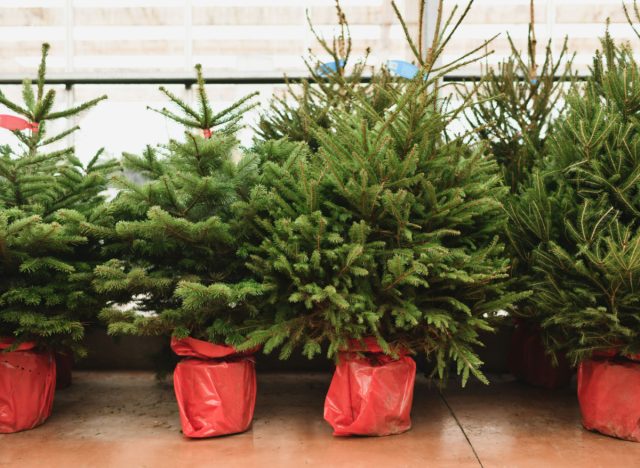
You may have a harder time finding a live Christmas tree this holiday season as last year’s extreme droughts and forest fires took out a lot of the budding pines.
Our tip? Shop local. You might find that some of the major big-box retailers have an unreliable distribution—Costco isn’t stocking many of its stores with live trees this year, for example. If you do find one you like, snap it up. But if you’re being mindful of your wallet, just be warned: tree farms are reporting a price hike of around 25% compared to the past few years, due to increased production costs.